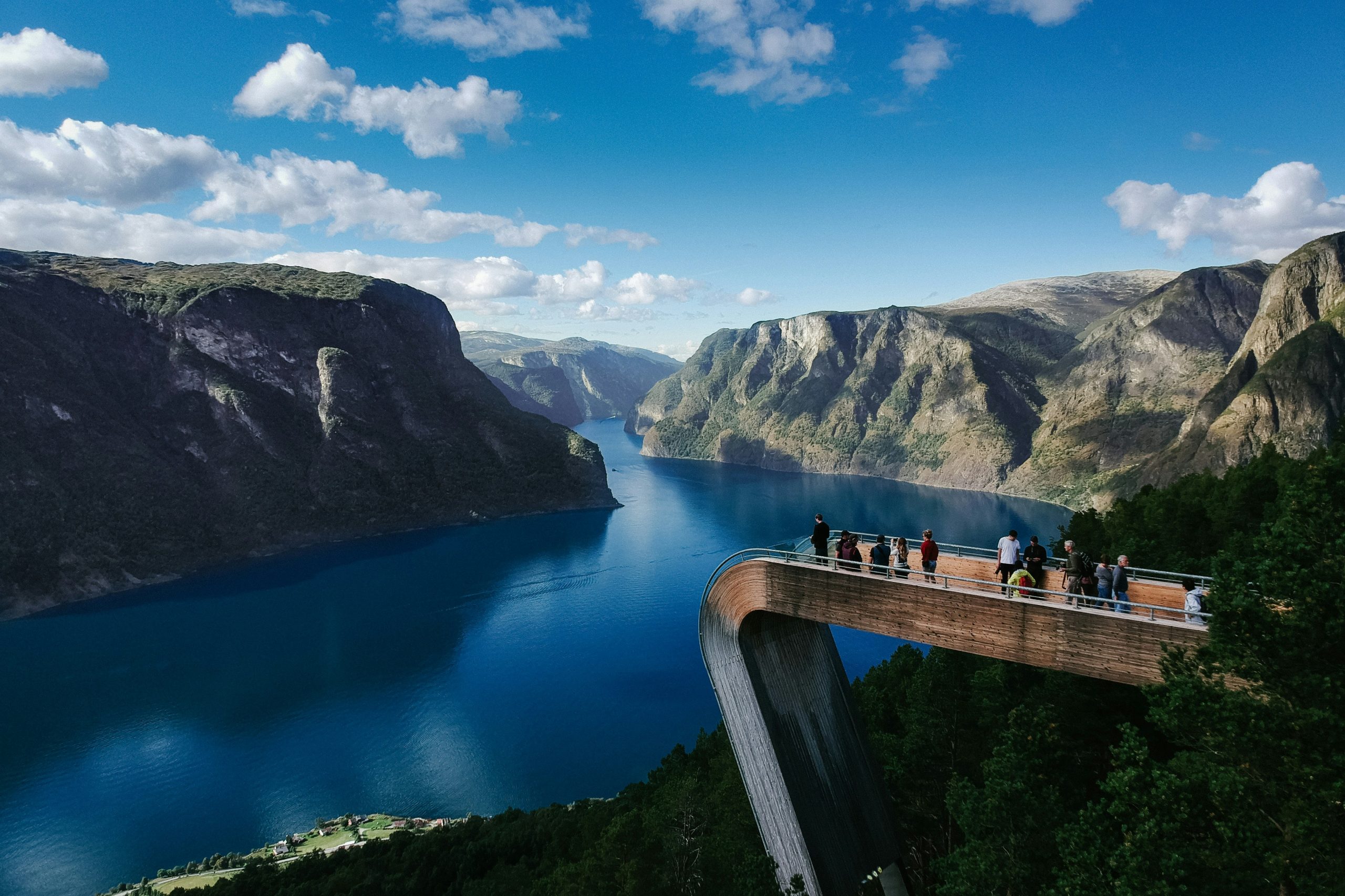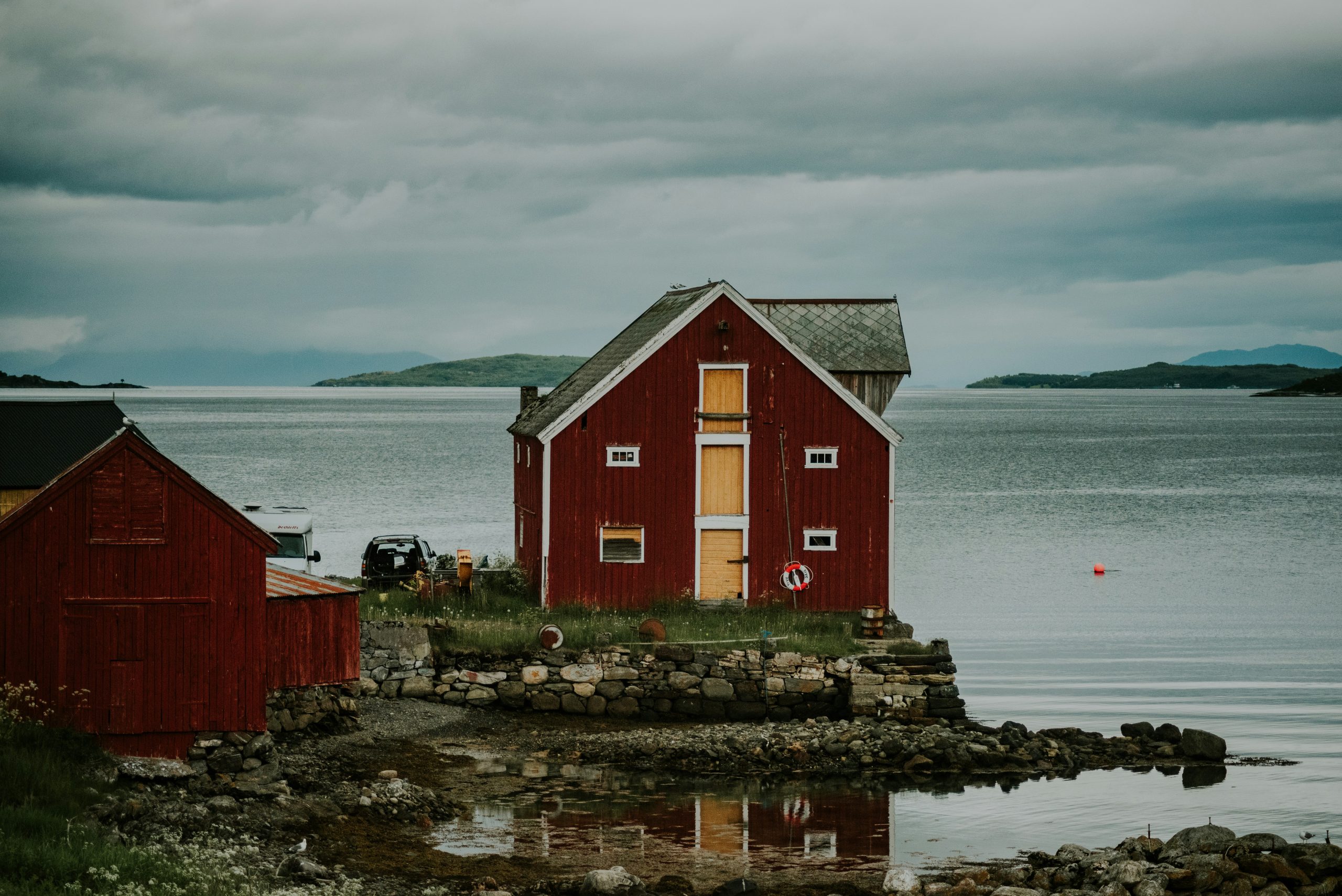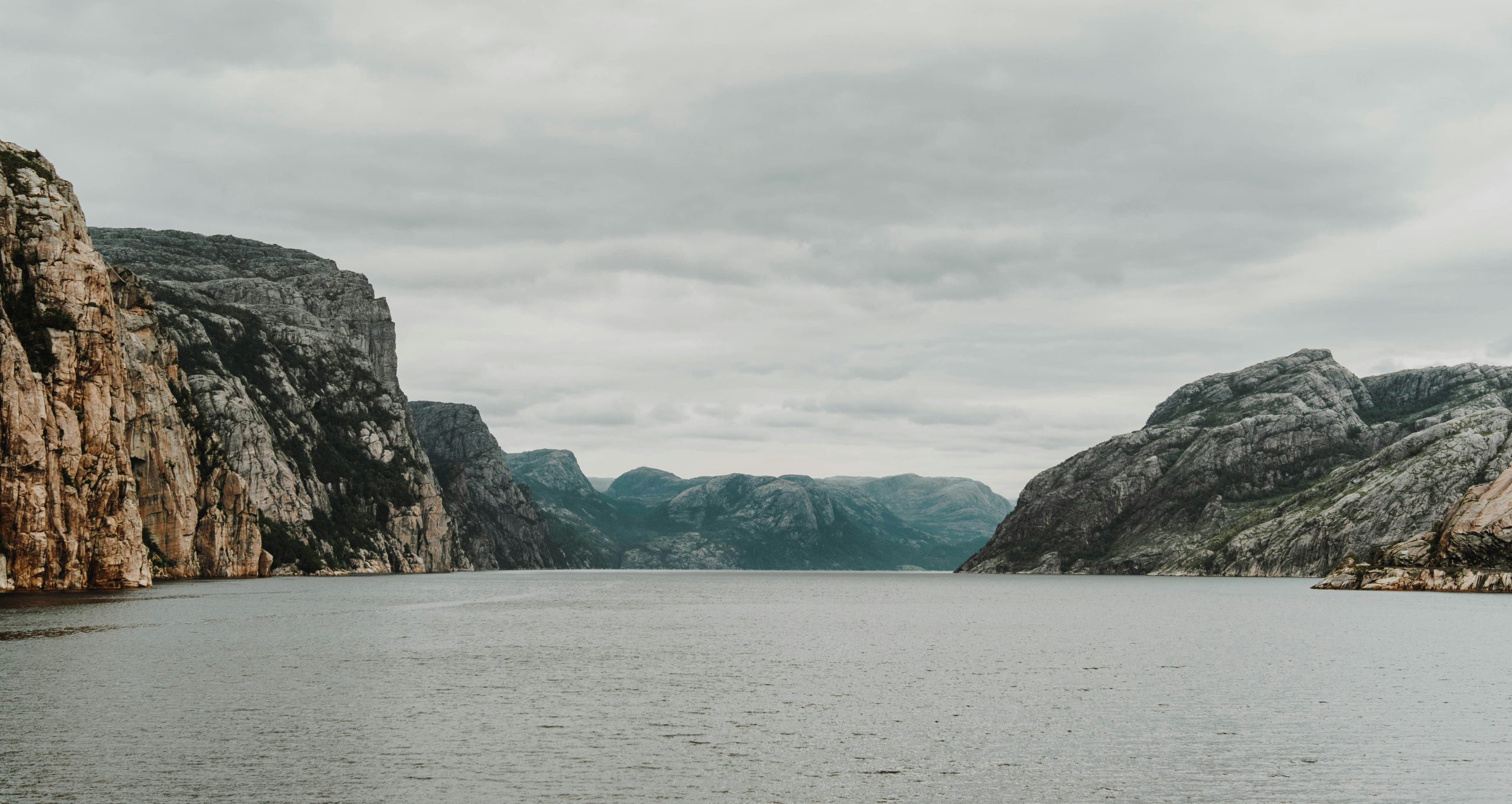Discover the awe-inspiring beauty of Norway’s fjords and embark on a journey to uncover if they truly stand as the most breathtaking natural wonders on Earth. Join us as we delve into the enchanting landscapes and undeniable charm of these majestic fjords.
Are Norway’s fjords truly the most breathtaking natural wonders on earth?

Norway’s fjords are nature’s masterpiece, a combination of stunning landscapes shaped by millions of years of geological processes. From the majestic cliffs to the tranquil waters, exploring Norway’s fjords is a remarkable experience that immerses you in the beauty and tranquility of these natural wonders.
Eidfjord: your gateway to the breathtaking beauty of fjord norway
Located in the heart of Fjord Norway, Eidfjord serves as the perfect starting point for exploring the region’s breathtaking fjords. Surrounded by towering mountains and crystal-clear waters, Eidfjord offers a picturesque setting that is sure to captivate any nature enthusiast.
How are fjords formed?
Fjords are formed through a combination of glacial, geological, and hydrological processes. During the last Ice Age, massive glaciers carved deep valleys into the landscape, which were later flooded by the sea as the glaciers retreated. The result is the iconic fjord landscape we see today, with steep cliffs and deep, narrow waterways.
5 of the best fjord cruises from bergen
1. Sognefjord Cruise: Explore the longest and deepest fjord in Norway, surrounded by towering mountains and lush greenery.
2. Hardangerfjord Cruise: Sail through the stunning Hardangerfjord, known for its picturesque orchards and cascading waterfalls.
3. Geirangerfjord Cruise: Experience the UNESCO-listed Geirangerfjord, with its dramatic cliffs and impressive waterfalls.
4. Nærøyfjord Cruise: Navigate the narrow Nærøyfjord, a hidden gem with breathtaking scenery and serene surroundings.
5. Lysefjord Cruise: Discover the awe-inspiring Lysefjord, famous for the iconic Pulpit Rock and steep cliffs that rise from the water’s edge.
best national parks in norway
Norway is home to some of the most pristine national parks in the world, offering a chance to immerse yourself in nature and soak in the beauty of the fjords. From Jotunheimen National Park to Rondane National Park, each park showcases Norway’s natural wonders in all their glory.
The 17 best things to do in bergen norway
1. Visit Bryggen: Explore the historic harbor district of Bergen, a UNESCO World Heritage site with colorful wooden buildings.
2. Take the Fløibanen Funicular: Ride up Mount Fløyen for panoramic views of the city and surrounding fjords.
3. Explore the Fish Market: Sample fresh seafood and local delicacies at Bergen’s famous Fish Market.
4. Visit Troldhaugen: Discover the former home of composer Edvard Grieg and enjoy concerts in the picturesque setting.
5. Hike Mount Ulriken: Challenge yourself with a hike up Bergen’s highest mountain for breathtaking views of the city and fjords.
As you embark on your journey to explore Norway’s breathtaking fjords, remember to embrace every moment and let the natural wonders around you leave a lasting impression. Whether cruising through the serene waters or hiking along the majestic cliffs, the fjords of Norway are sure to inspire and amaze, offering a truly remarkable natural wonder for all to enjoy.
the beauty of Norway’s fjords

Norway’s fjords, carved by ancient glaciers, stand as majestic testaments to the raw power of nature. Fjords are deep, narrow inlets with steep cliffs created by glacial erosion, and Norway boasts some of the most stunning examples in the world. Let’s delve into the unparalleled beauty of Norway’s fjords.
a natural wonder
Norway’s fjords offer a mesmerizing tapestry of rugged cliffs plunging into crystal-clear waters, lush greenery hugging the mountainsides, and cascading waterfalls painting the landscape with ethereal beauty. Each fjord tells a story of millions of years of geological processes, making them not only visually stunning but also scientifically fascinating.
serene hideaways
For nature enthusiasts seeking tranquility and adventure, Norway’s fjords provide the perfect escape. Imagine waking up to the gentle lapping of waves against the shore, surrounded by the peace and serenity of pristine wilderness. Hiking trails meander through untamed forests and mountains, offering unparalleled views of the fjords below.
a haven for exploration
Exploring Norway’s fjords unveils a world of wonder waiting to be discovered. From kayaking through narrow waterways to witnessing the midnight sun casting a golden hue over the cliffs, every moment spent in the fjords is a testament to the beauty and grandeur of nature. Wildlife abounds, with eagles soaring overhead and seals basking in the sun along the shores.
immersive experiences
To truly appreciate the beauty of Norway’s fjords, immerse yourself in the local culture and traditions. Savor freshly caught seafood in charming coastal villages, where the warmth of the locals matches the stunning views. Visit historic lighthouses perched on cliff edges, offering panoramic vistas that will take your breath away.
In conclusion, Norway’s fjords stand as unparalleled natural wonders, inviting visitors to embrace the beauty of untouched landscapes and experience the magic of the great outdoors. Plan your next adventure to Norway and discover the awe-inspiring beauty of its fjords firsthand.
geological formation of Norway’s fjords

Norway’s fjords are among the most iconic natural formations on Earth, sculpted by millions of years of geological processes. Understanding the unique geological forces that have shaped these majestic landscapes is essential to appreciating their beauty and significance.
the formation of fjords
Fjords are typically formed through a combination of glacial erosion and tectonic activity. During the last Ice Age, massive glaciers carved deep valleys into the rugged Norwegian landscape, creating the long, narrow inlets that we now know as fjords. As the glaciers moved inland, they excavated U-shaped valleys, which were later flooded by rising sea levels, leading to the formation of fjords.
Key points:
– Glacial erosion
– Tectonic activity
– Rising sea levels
the role of tectonic activity
Tectonic forces have also played a crucial role in the formation of Norway’s fjords. The movement of the Earth’s crust along fault lines has caused the land to sink and rise in certain areas, creating the distinctive steep cliffs and deep basins that characterize fjords. This tectonic activity continues to shape the Norwegian coastline, with some fjords expanding due to ongoing geological processes.
Key points:
– Earth’s crust movement
– Fault lines
– Steep cliffs and deep basins
impact of climate change
Climate change is posing a significant threat to Norway’s fjords, with rising temperatures leading to the rapid retreat of glaciers. The alarming shrinkage of glaciers like Ålfotbreen highlights the delicate balance between geological processes and environmental factors. As glaciers melt, they release freshwater into the fjords, impacting marine ecosystems and altering the delicate equilibrium of these fragile habitats.
Key points:
– Glacier retreat
– Freshwater release
– Impact on marine ecosystems
fossil fjords and future implications
The discovery of fossil fjords in Africa offers insights into how the Arctic region might look in a distant future. Studying these ancient formations provides valuable information on the long-term effects of climate change and the potential evolution of Norway’s fjords over millennia. By understanding the geological history of fjords, scientists can better predict future changes and protect these natural wonders for generations to come.
Key points:
– Fossil fjords in Africa
– Climate change implications
– Geological evolution
In conclusion, delving into the geological formation of Norway’s fjords reveals the intricate interplay of glacial, tectonic, and climatic forces that have shaped these breathtaking landscapes. As we continue to study and appreciate the geological history of fjords, we gain a deeper understanding of our planet’s dynamic processes and the urgent need to preserve these natural wonders for future exploration and enjoyment.
flora and fauna in Norway’s fjords
Norway’s fjords are not only a feast for the eyes with their majestic landscapes and towering cliffs, but they also harbor a rich diversity of flora and fauna waiting to be discovered. Let’s dive into the vibrant ecosystems that thrive in this unique environment.
Flora of Norway’s Fjords
The flora of Norway’s fjords is as varied as it is stunning, with a mix of unique plant species adapted to the harsh climate and rocky terrain. From delicate Arctic flowers to resilient shrubs and trees, the fjords boast a remarkable botanical tapestry:
- Arctic Willow: This low-growing shrub with silver-grey leaves can be found clinging to rocky outcrops, providing a pop of green in the otherwise barren landscape.
- Fjord Pink: A hardy perennial flower that carpets the ground with its vibrant pink blooms, adding a splash of color to the rugged fjord scenery.
- Mountain Avens: Known for its striking yellow flowers, this plant thrives in the alpine meadows and rocky slopes of the fjords.
Fauna of Norway’s Fjords
The fjords of Norway are home to a diverse array of wildlife, both on land and in the water. From elusive Arctic foxes to majestic sea eagles, the fjords teem with life waiting to be encountered. Here are some of the iconic species you may come across:
- Arctic Fox: Known for its thick fur that changes color with the seasons, the Arctic fox is a master of camouflage in the snowy landscapes of the fjords.
- Sea Eagle: With its impressive wingspan and keen eyesight, the sea eagle is a magnificent sight as it soars high above the fjords in search of fish.
- Harbor Seal: These curious creatures can often be spotted lounging on rocks or swimming gracefully in the cold waters of the fjords.
Exploring the Enchanting Ecosystems
Embarking on a journey to explore the flora and fauna of Norway’s fjords is more than just a sightseeing adventure – it’s a chance to immerse yourself in some of the world’s most breathtaking natural environments. Guided wildlife tours, hiking trails, and boat excursions offer unique opportunities to witness the beauty and diversity of life that thrives in this rugged landscape.
Whether you’re a nature enthusiast, a wildlife lover, or simply seeking a peaceful escape in the midst of Norway’s stunning scenery, the fjords promise an unforgettable experience rich in natural wonders and fascinating encounters with the local flora and fauna.
So pack your bags, lace up your hiking boots, and get ready to embark on a journey of discovery through the enchanting flora and fauna of Norway’s fjords.
impact of tourism on Norway’s fjords
Norway’s fjords are renowned for their majestic beauty, with towering cliffs, crystal-clear waters, and lush greenery. As tourism in this region continues to grow, it brings both opportunities and challenges for the fragile ecosystem of the fjords.
Increased Accessibility and Visitor Numbers
The development of new routes, such as the recently introduced route from Brussels to the Norwegian fjords, has made these remote natural wonders more accessible to tourists from around the world. This increased accessibility has led to a surge in visitor numbers, with more travelers than ever flocking to experience the awe-inspiring landscapes of the fjords.
Environmental Impact
While tourism brings economic benefits to local communities, it also poses a threat to the pristine environment of the fjords. The rise in cruise ships and other forms of transportation has raised concerns about pollution, waste disposal, and the disturbance of wildlife habitats. Efforts are being made to keep the fjords waste-free, but the challenge remains as tourism continues to expand.
Sustainable Solutions
To address the environmental impact of tourism, Norway is pioneering sustainable solutions. The introduction of electric ferries, like the Legacy Of The Fjords, helps reduce carbon emissions and minimize the ecological footprint of travel within the fjords. Initiatives such as waste management programs and eco-friendly practices aim to preserve the natural beauty of the region for future generations.
Preserving Authenticity and Culture
As tourism grows, there is a need to balance visitor experiences with the preservation of the authentic culture and heritage of the fjords. Local communities are working to maintain their traditions and way of life while welcoming travelers and sharing the unique charm of their villages, such as the pretty village often referred to as Norway’s answer to Hay-on-Wye.
The impact of tourism on Norway’s fjords is undeniable, bringing both benefits and challenges to this breathtaking natural environment. By prioritizing sustainability, responsible travel practices, and the preservation of local culture, Norway is striving to ensure that tourism enhances rather than harms the beauty of the fjords for years to come.
